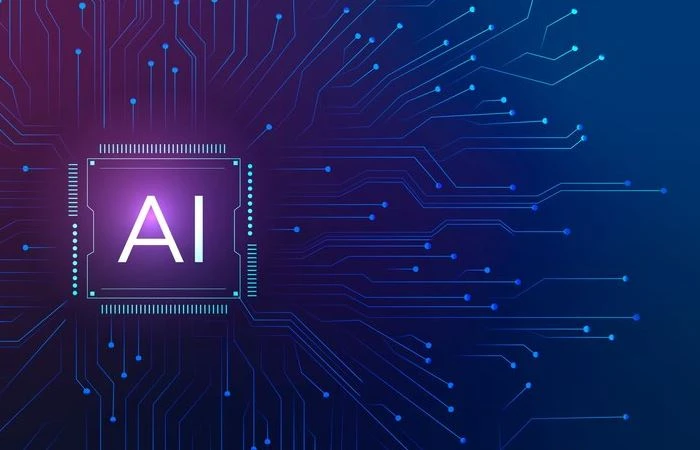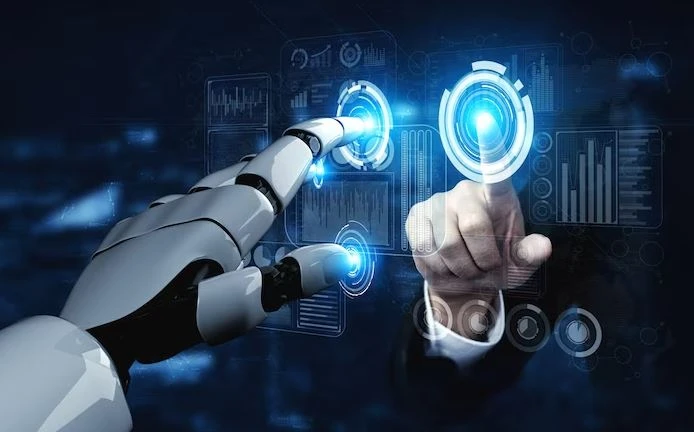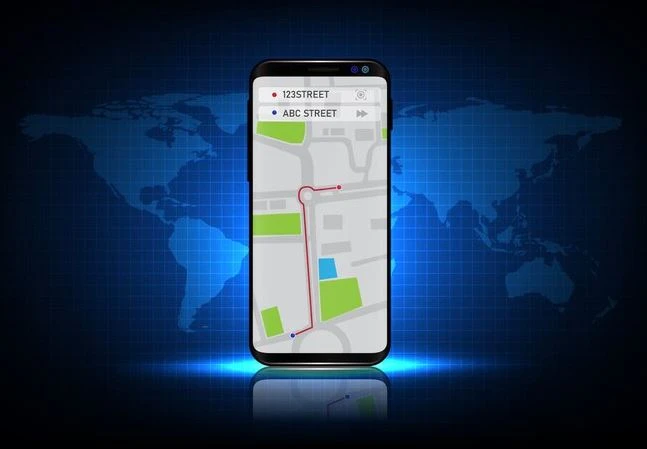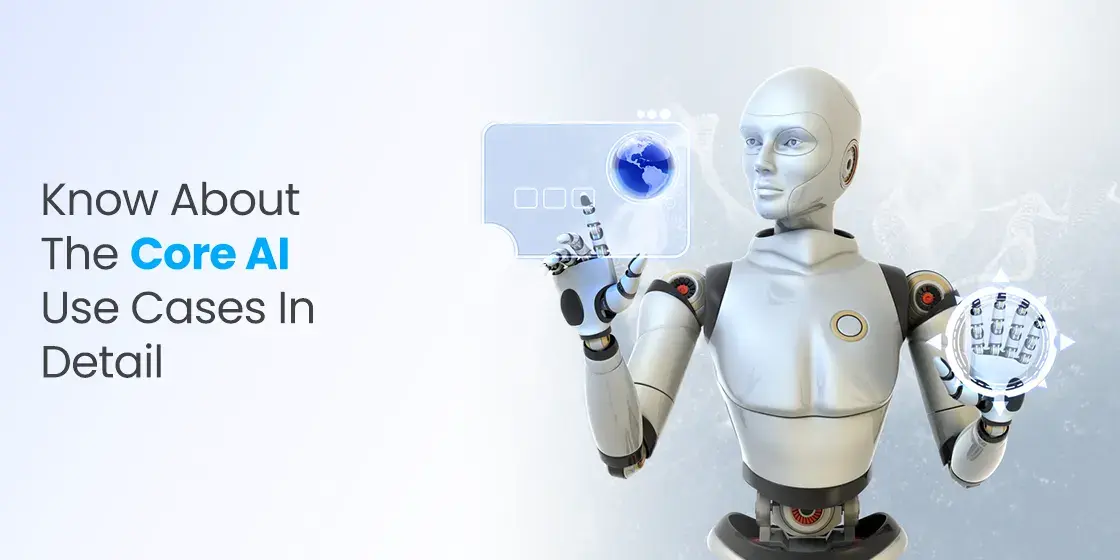Table of Content
Know How AI is Bringing Massive Innovation Across Different Industries
Artificial intelligence has taken the tech industry to new heights. It has brought a great revolution in the world, optimizing the performance of every industry. From medical to IT, the impact of artificial intelligence in transformation is pretty clear and straightforward. It has scaled up the performance bar by automating several operations of businesses. To understand them, you must first need to know the areas where businesses face problems due to lack of automation. That is how you get to know the AI use cases for different scenarios. This blog will let you know some of them, so that you can understand the importance of AI for different businesses.
Earlier, people only thought that AI would prove to be beneficial for the IT industry. But, as the technology grew rapidly, it showcased the potential for growth and integration in other sectors. People saw the innovative AI use cases in those areas where they have least expected it to be beneficial. This has not only increased the popularity of the technology, but also its rapid adoption in the market. Companies are actively transforming their businesses by taking AI-powered software development services, as they have seen its potential in automation and scaling up the growth quickly.
In this blog, we will discuss different AI use cases in detail, so that you can understand its significance for different sectors. It is a revolutionary technology that is simplifying business operations without bringing any overhead disruptions. Let’s start from the basics understanding how AI is proving to be beneficial for different sectors, including IT, medical, retail and more others.
Importance of AI for Different Industries

AI has become a cornerstone in various industries, revolutionizing traditional processes and driving innovation. In healthcare, AI holds immense potential for improving patient care, diagnosis, and treatment. Advanced algorithms can analyze vast amounts of medical data to identify patterns and make accurate predictions, aiding in early disease detection and personalized medicine. Additionally, AI-powered systems can enhance administrative tasks and optimize resource allocation, ultimately leading to more efficient healthcare delivery and improved outcomes for patients worldwide.
The financial sector also heavily relies on AI to manage risks, detect fraud, and automate routine tasks. Machine learning algorithms can analyze market trends, customer behavior, and economic indicators in real-time, enabling financial institutions to make data-driven decisions and develop predictive models for investment strategies. Moreover, AI-powered chatbots and virtual assistants are increasingly utilized for customer service, providing personalized recommendations and resolving inquiries promptly, thereby enhancing customer satisfaction and retention.
In manufacturing, AI technologies such as robotics and predictive maintenance are revolutionizing production processes and supply chain management. Autonomous robots equipped with AI algorithms can perform complex tasks with precision and speed, leading to increased productivity and reduced operational costs. Moreover, predictive maintenance systems leverage AI to analyze equipment data and anticipate potential failures, enabling proactive maintenance and minimizing downtime. By harnessing the power of AI, manufacturers can optimize efficiency, and adapt to changing market demands efficiently.
Understanding AI Use Cases Across Different Industries
As defined above, AI has proven to be beneficial not just for the IT industry, but for other commercial sectors as well. It offers automation utility for a variety of businesses working in different sectors. That is why it is important to understand the use cases of AI in different domains operational in the commercial spectrum. Let’s take a look at them in detail below.
AI Use Cases in Education

Smart Content Creation
AI content creation encompasses the utilization of sophisticated natural language generation (NLG) models, which specialize in converting structured data into coherent and human-readable text. Within this domain, one prominent example is the application of GPT (Generative Pre-trained Transformer) models. These advanced systems are tailored to excel in generating educational content across various subjects and contexts. Through fine-tuning processes, GPT models adapt to the nuances of specific educational domains, ensuring the produced content aligns seamlessly with the needed demands.
GPT models stand out for their versatility and adaptability in crafting educational materials. By leveraging vast amounts of pre-existing knowledge and language patterns, these models can generate content that not only communicates complex concepts effectively but also maintains a natural and engaging tone. Through meticulous fine-tuning, they can be customized to cater to diverse educational software development needs, whether it’s creating interactive lesson plans, crafting informative articles, or generating assessment materials.
Voice Assistants
Voice-enabled AI integration in education hinges on the seamless coordination of automatic speech recognition (ASR) and natural language understanding (NLU) technologies. ASR serves as the backbone, swiftly converting spoken language into precise text representations, while NLU adds a layer of comprehension, allowing the system to interpret and respond intelligently to user queries and commands. This dynamic synergy between ASR and NLU forms the foundation for immersive and interactive learning experiences within educational settings.
These AI-driven solutions are seamlessly woven into educational platforms, enriching the learning journey with hands-free and interactive capabilities. Students can engage with course materials, ask questions, and receive instant feedback simply by speaking, eliminating the need for manual input and enhancing accessibility. Moreover, the integration of voice-enabled AI fosters a more dynamic learning environment, where students can actively participate in discussions, quizzes, and interactive exercises, promoting deeper comprehension and engagement with the subject matter.
AI Use Cases in Ecommerce

Personalized Shopping
AI harnesses the capabilities of machine learning algorithms to delve deep into user browsing patterns, purchase histories, and demographic profiles, extracting valuable insights that fuel personalized product recommendations in real-time. By scrutinizing these multifaceted data streams, AI systems can discern intricate nuances in individual preferences and behavior, enabling them to curate tailored suggestions that resonate with each user’s unique tastes and needs. This intricate process not only heightens the relevance of product recommendations but also fosters a sense of personalization and connection.
At the heart of this personalized recommendation ecosystem lie collaborative filtering and sophisticated deep learning models, which serve as the backbone of AI-driven ecommerce software development. Collaborative filtering algorithms analyze user interactions and preferences across a broad spectrum of products, identifying similarities and correlations to unearth hidden patterns and associations. Meanwhile, deep learning models leverage neural networks to process vast amounts of data and extract intricate features, enabling them to capture subtle nuances in user behavior and preferences with remarkable accuracy.
Scam Protection
Utilizing sophisticated anomaly detection algorithms and machine learning models, AI diligently sifts through vast volumes of data to pinpoint subtle patterns indicative of fraudulent activities. This comprehensive analysis encompasses a range of factors, including transaction histories, user behaviors, and contextual parameters, allowing AI systems to detect anomalies that may signify fraudulent behavior with precision. By scrutinizing these multifaceted data points, AI can discern irregularities and deviations from expected norms, flagging suspicious activities for further investigation while minimizing false positives.
At the forefront of AI-driven fraud detection are advanced deep learning techniques, such as neural networks, which empower systems to adapt and evolve in tandem with the ever-shifting landscape of fraudulent tactics. Neural networks excel in processing complex data structures and extracting nuanced features, enabling them to capture subtle variations and emerging patterns indicative of fraudulent behavior. Through iterative learning processes, these neural networks continuously refine their models, enhancing their ability to detect sophisticated fraud schemes while minimizing the risk of overlooking legitimate transactions.
AI Use Cases in Robotics

Live Object Sensing
Robotic systems integrated with AI capabilities for real-time obstacle detection employ a sophisticated fusion of computer vision and sensor technologies. This synergy enables robots to perceive their surroundings with heightened clarity, leveraging both visual and spatial data to effectively navigate complex environments. By combining inputs from various sensors, including cameras, LiDAR, and radar, AI-powered robots gain a comprehensive understanding of their surroundings, enabling them to detect obstacles and make informed navigational decisions in real-time.
The integration of AI-driven obstacle sensing and navigation not only enhances the autonomy and efficiency of robotic systems but also fosters safer interactions with their surroundings. By leveraging AI’s predictive capabilities, robots can anticipate potential obstacles and proactively plan optimal paths to navigate around them, minimizing the risk of collisions and ensuring smooth operation in diverse environments. Moreover, the adaptability of AI-powered navigation systems enables robots to operate seamlessly in dynamic and unstructured environments, unlocking new possibilities for applications ranging from warehouse logistics to autonomous vehicles.
Range of AI Applications
AI plays a pivotal role in diverse robotic applications across a spectrum of industries, encompassing vital sectors such as healthcare, manufacturing facilities, and warehouse operations. Within these domains, AI-driven robotic systems leverage advanced capabilities to perform a myriad of tasks, ranging from surgical assistance in hospitals to automated assembly lines in factories and efficient inventory management in warehouses. Central to these applications are sophisticated computer vision models, which empower robots to accurately identify and manipulate objects within their environments.
In addition to their prowess in object recognition and manipulation, AI-enabled robotic systems leverage reinforcement learning techniques to continually refine and optimize their performance across various tasks. Through iterative trial-and-error processes, robots equipped with reinforcement learning algorithms adapt their behaviors based on feedback received from their interactions with the environment. This adaptive learning process allows them to autonomously improve their efficiency and effectiveness in executing tasks such as cleaning, inventory management, and goods transportation.
AI Use Cases in Navigation

Live GPS Tracking
AI enhances GPS technology by leveraging advanced algorithms for real-time data processing and analysis. Through the application of machine learning techniques such as decision trees and clustering models, GPS accuracy is significantly refined. These algorithms dynamically incorporate diverse factors including current traffic conditions, road closures, and historical navigation patterns. By continuously updating and optimizing based on the evolving data landscape, AI empowers GPS systems to deliver precise and efficient navigation guidance to users.
Furthermore, AI-driven GPS systems not only enhance accuracy but also adaptability. They have the capability to learn from user behavior and preferences, intelligently adjusting routes and recommendations over time. By analyzing patterns in user interactions and feedback, these systems can personalize navigation experiences, providing tailored suggestions that align with individual preferences. This adaptability not only improves user satisfaction but also contributes to overall efficiency in navigation, ensuring that users reach their destinations with optimal routes based on both real-time and historical insights.
Road Pathway Detection
In navigation, the integration of Convolutional Neural Networks (CNNs) and Graph Neural Networks (GNNs) significantly advances road comprehension. CNNs play a pivotal role by meticulously analyzing visual data captured by cameras, adeptly identifying lane markings and discerning various road types with precision. These networks excel in processing images, enabling them to provide detailed insights into the immediate road environment..
The synergy between CNNs and GNNs in navigation AI introduces a multifaceted approach to road understanding. While CNNs specialize in visual perception, parsing critical details such as lane markings, GNNs complement this by providing a broader contextual understanding of road networks. This combination not only enables navigation systems to navigate effectively around obstacles but also empowers them to anticipate road conditions ahead, fostering smoother and more efficient travel experiences.
Frequently Asked Questions
| Why AI is gaining popularity across different industries? AI is gaining popularity across industries for its ability to streamline processes, enhance decision-making, and unlock insights from vast amounts of data, leading to increased efficiency and innovation. |
| What is the use case of AI in education sector? AI in education optimizes personalized learning experiences by analyzing student data and adapting instruction accordingly, fostering efficient and tailored educational paths for individuals. |
| What is the use case of AI in medical sector? In the medical sector, AI aids in diagnosing diseases, predicting patient outcomes, and personalizing treatment plans through analysis of medical imaging. These utilities have made AI an important technology for healthcare institutions. |
Final Words
That takes us to the end of this blog in which we have discussed various types of AI uses cases for different industries. Since the emergence of artificial intelligence, we have seen its impact across various sectors. This is the major reason why every business is trying to incorporate AI in its operational infrastructure, as it has been a revolutionary thing for everyone. This blog has discussed the utility of AI in different sectors. It has defined how AI is helping different industries to automate various tasks with ease.
If you are looking for an agency that could help you to build an AI-powered software, get in touch with us today. We will assist you to develop cutting-edge AI systems rightly as per the needed functional requirements.
Empower your digital initiatives with BariTechSol, a premier custom software development company. Our skilled team tailors cutting-edge solutions to your unique needs. Elevate your tech experience and stay ahead in the digital realm. Partner with BaritechSol and code the success of your next big idea.


